All Lessons

Check Solutions to a Linear Inequality
Share This Lesson
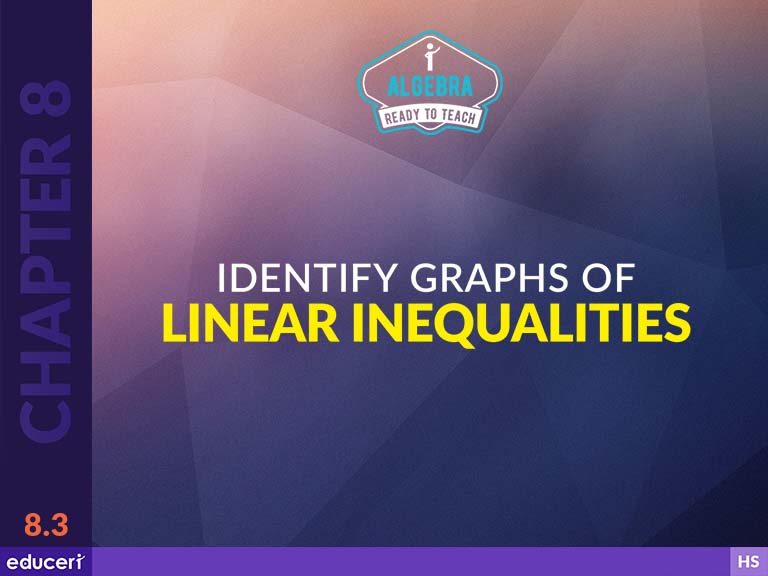
Identify Graphs of Linear Inequalities
Share This Lesson

Use Exponent Rules to Simplify Expressions with Fractions
8.EE.1 Know and apply the properties of integer exponents to generate equivalent numerical expressions. For example, 32 × 3-5 = 3-3 = 1/33 = 1/27.
HSA.APR.6HSA.APR.6 Rewrite simple rational expressions in different forms; write a(x)/b(x) in the form q(x) + r(x)/b(x), where a(x), b(x), q(x), and r(x) are polynomials with the degree of r(x) less than the degree of b(x), using inspection, long division, or, for the more complicated examples, a computer algebra system.
Lesson 9.6
Share This Lesson
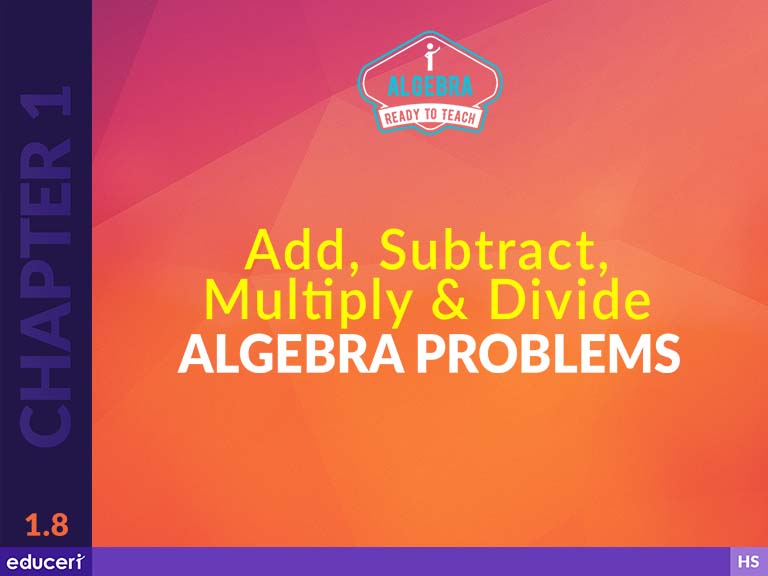
Add, Subtract, Multiply, and Divide in Algebra Problems
6.EE.2 Write, read, and evaluate expressions in which letters stand for numbers.
6.EE.36.EE.3 Apply the properties of operations to generate equivalent expressions. For example, apply the distributive property to the expression 3 (2 + x) to produce the equivalent expression 6 + 3x; apply the distributive property to the expression 24x + 18y to produce the equivalent expression 6 (4x + 3y); apply properties of operations to y + y + y to produce the equivalent expression 3y.
Share This Lesson

Evaluate Expressions
(E) Describe the meaning of parentheses and brackets in a numeric expression
5.4.F(F) Simplify numerical expressions that do not involve exponents, including up to two levels of grouping
5.OA.1 Use parentheses, brackets, or braces in numerical expressions, and evaluate expressions with these symbols.
5.OA.25.OA.2 Write simple expressions that record calculations with numbers, and interpret numerical expressions without evaluating them. For example, express the calculation "add 8 and 7, then multiply by 2" as 2 × (8 + 7). Recognize that 3 × (18932 + 921) is three times as large as 18932 + 921, without having to calculate the indicated sum or product.
Share This Lesson

Describe Algebra Expressions
(Y7) Introduce the concept of variables as a way of representing numbers using letters (ACMNA175)
ACMNA177(Y7) Extend and apply the laws and properties of arithmetic to algebraic terms and expressions (ACMNA177)
6.EE.2.A Write expressions that record operations with numbers and with letters standing for numbers. For example, express the calculation "Subtract y from 5" as 5 - y.
6.EE.2.B6.EE.2.B Identify parts of an expression using mathematical terms (sum, term, product, factor, quotient, coefficient); view one or more parts of an expression as a single entity. For example, describe the expression 2 (8 + 7) as a product of two factors; view (8 + 7) as both a single entity and a sum of two terms.
Share This Lesson

Combine Like Terms
(A) Represent multi-step problems involving the four operations with whole numbers using strip diagrams and equations with a letter standing for the unknown quantity
6.7.D(D) Generate equivalent expressions using the properties of operations: inverse, identity, commutative, associative, and distributive properties.
6.EE.3 Apply the properties of operations to generate equivalent expressions. For example, apply the distributive property to the expression 3 (2 + x) to produce the equivalent expression 6 + 3x; apply the distributive property to the expression 24x + 18y to produce the equivalent expression 6 (4x + 3y); apply properties of operations to y + y + y to produce the equivalent expression 3y.
6.EE.46.EE.4 Identify when two expressions are equivalent (i.e., when the two expressions name the same number regardless of which value is substituted into them). For example, the expressions y + y + y and 3y are equivalent because they name the same number regardless of which number y stands for.
Share This Lesson

Distribute
6.EE.3 Apply the properties of operations to generate equivalent expressions. For example, apply the distributive property to the expression 3 (2 + x) to produce the equivalent expression 6 + 3x; apply the distributive property to the expression 24x + 18y to produce the equivalent expression 6 (4x + 3y); apply properties of operations to y + y + y to produce the equivalent expression 3y.
6.EE.46.EE.4 Identify when two expressions are equivalent (i.e., when the two expressions name the same number regardless of which value is substituted into them). For example, the expressions y + y + y and 3y are equivalent because they name the same number regardless of which number y stands for.
Share This Lesson
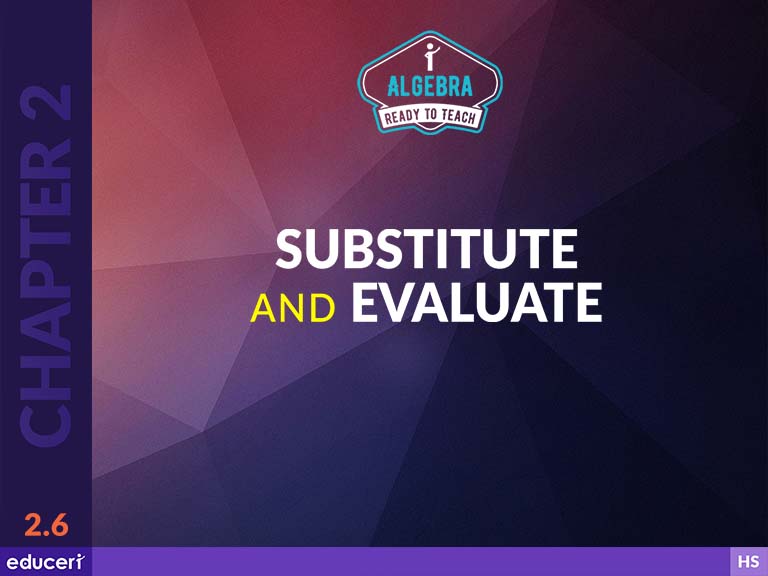
Substitute and Evaluate
Share This Lesson
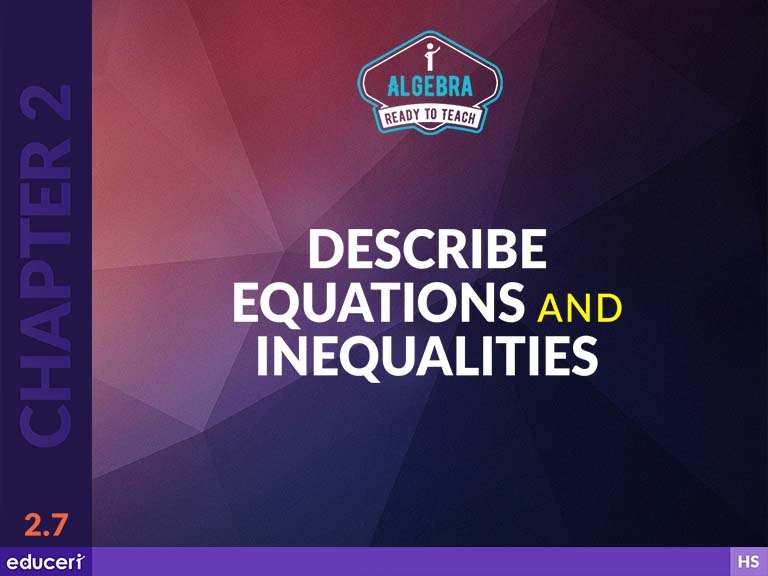
Describe Equations and Inequalities
(B) Distinguish between expressions and equations verbally, numerically, and algebraically
6.EE.5 Understand solving an equation or inequality as a process of answering a question: which values from a specified set, if any, make the equation or inequality true? Use substitution to determine whether a given number in a specified set makes an equation or inequality true.
6.EE.86.EE.8 Write an inequality of the form x > c or x < c to represent a constraint or condition in a real-world or mathematical problem. Recognize that inequalities of the form x > c or x < c have infinitely many solutions; represent solutions of such inequalities on number line diagrams.
Share This Lesson

Use Inverse Operations (Subtract to Zero)
Share This Lesson
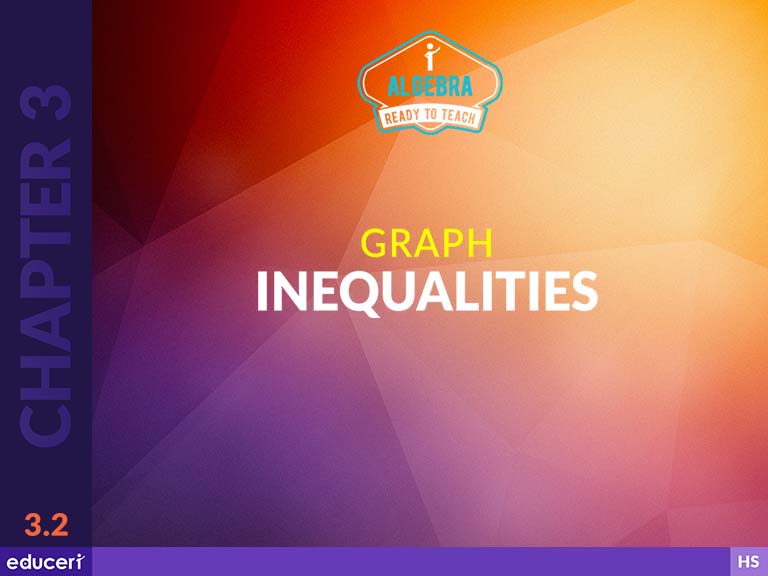
Share This Lesson

Solve Inequalities Using Additive Inverse
Share This Lesson

Use Inverse Operations (Divide to One)
(A) Recognize that dividing by a rational number and multiplying by its reciprocal result in equivalent values
6.10.A(A) Model and solve one-variable, one-step equations and inequalities that represent problems, including geometric concepts
Share This Lesson





